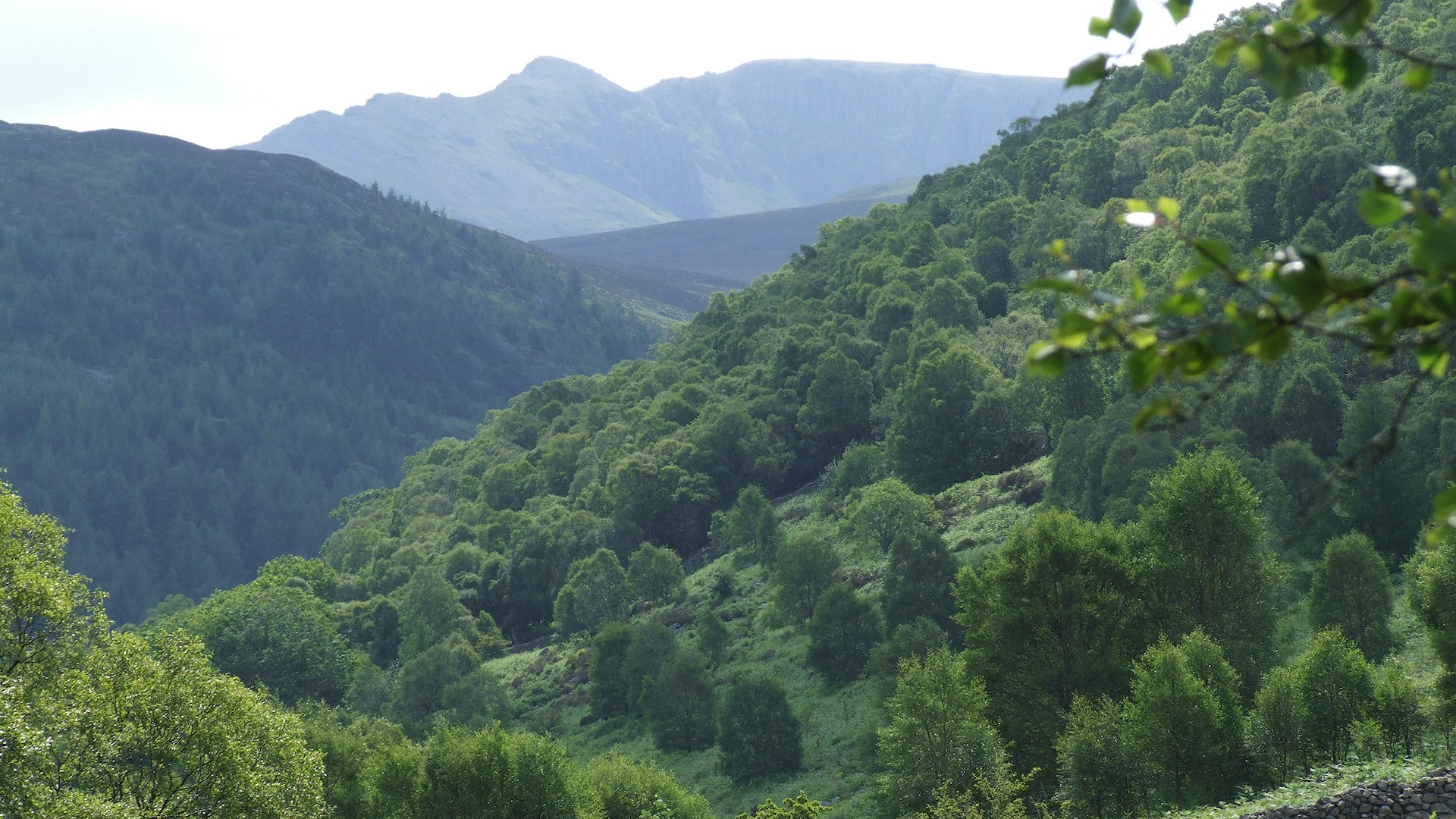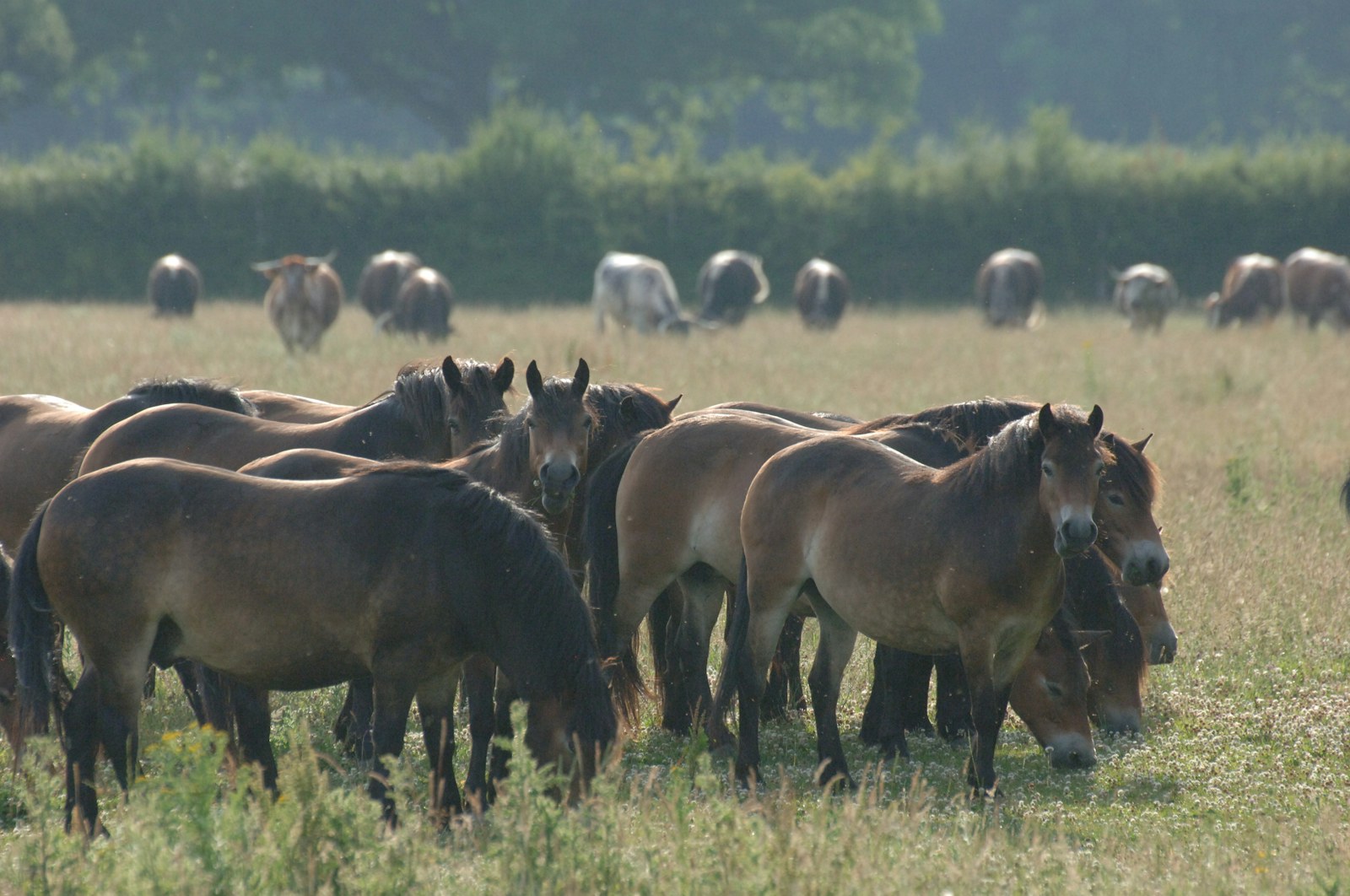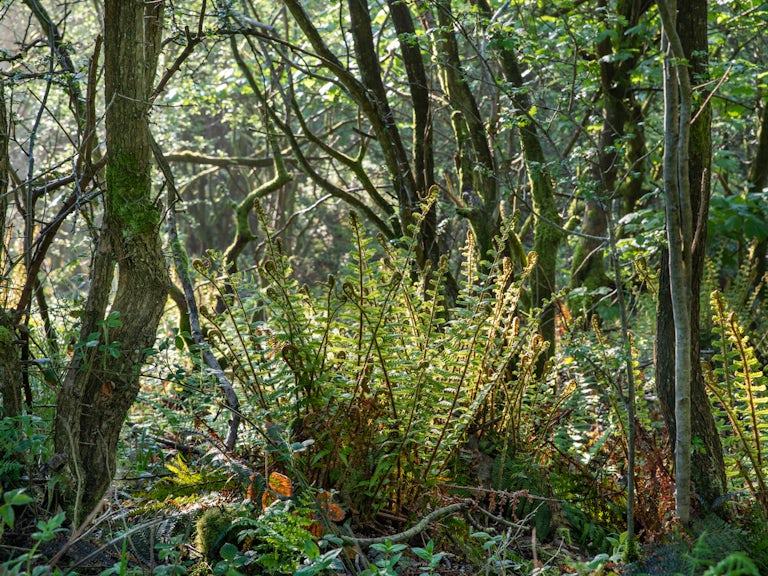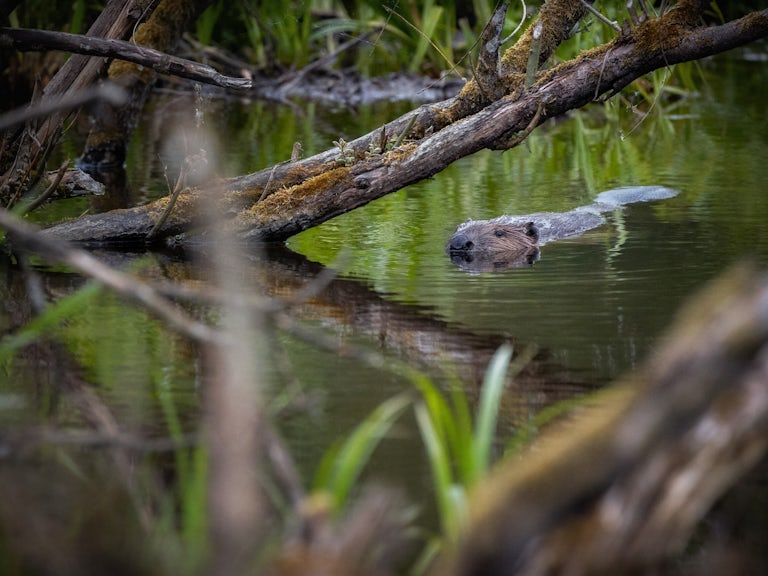Consultation: UK Agriculture Bill
How you can take action on the UK Government’s consultation on Environmental Land Management scheme.

During the ELM scheme consultation (which closed in July 2020), we encouraged you to:
- Download and read the Environmental Land Management Policy Discussion February 2020 document
- Read our response below or download it as a PDF document. You can copy and paste any useful bits from this web page or from the PDF.
- Go to Defra’s Environmental Land Management policy page, launch the online survey, answer the questions then submit your response
Please note that ELM policy applies to land use in England, although it could potentially influence the approach taken in the rest of the UK.
Rewilding in ELM scheme
We believe rewilding and rewilding principles should be enshrined in the ELM scheme. Currently the ELM scheme consultation questions, and the accompanying policy discussion document, don’t mention rewilding at all.
We think this is a major oversight. We know dozens of landowners in England, with over 40,000 ha between them, who are already rewilding or planning to rewild. This total is growing by the week. Here are our answers to the consultation questions. We suggest you submit similar comments if you agree with us.

Our response to the ELM survey questions
Download pdfOur response to the ELM survey questions
The ELM survey contains 17 questions in total. Questions 1 – 5 are personal questions. Questions 6 – 17 relate to the development of the scheme.
Question 6
Do you have any comments on the design principles on page 14? Are they the right ones? Are there any missing?
In our answer to question 7, we explain why we are calling for rewilding to be a more explicit part of the ELM scheme. We describe how rewilding is a cost effective way of delivering on its objectives. For this reason, we strongly believe that the ELM guidance should mainstream rewilding as one of many valued options available for future land use.
With this in mind the key missing design principles are:
a. Ensure that wherever possible measures aim to reinstate natural processes and, where appropriate, missing species – allowing them to shape the landscape and the habitats within.
b. Ensure that habitat restoration involves natural regeneration wherever possible, and that active habitat management is used primarily to help restore damaged landscapes and natural processes. For example, blocking drainage, de-canalising rivers, removing fencing, tree planting where seed sources are inadequate, replacing functions of missing keystone species (e.g. to control deer populations), and removal of introduced species that disrupt natural processes (e.g. mammalian predators on seabird islands).
c. Provide support for locally led partnerships that coordinate cohesive action across multiple landholdings to deliver greater benefit at a landscape scale.
d. Ensure there is a network of community-based, trusted expert advisors to help provide the skills, training, and access to financial support that farmers and other land managers need through the transition process.
Guidance note: This question and answer relates to the following extract from the Environmental Land Management Policy Discussion February 2020 document, which states:
To make sure we develop a scheme that is successful and effective, we need to check any design proposals against clearly stated design principles. Our suggested set of design principles is set out below.
For all elements of the ELM scheme design we will:
a. Focus on achieving environmental outcomes, helping to deliver our 25 Year Environment Plan and net zero target. In doing so, it will help farmers, foresters and other land managers optimise the potential of their land to deliver public goods, as part of a thriving food or other land-based business;
b. Ensure national and local environmental priorities are supported and balanced effectively;
c. Ensure that the scheme and its underpinning systems and processes work effectively and represent maximum value for money to the taxpayer;
d. Ensure that ELM includes actions that most farmers, foresters and other land managers could deliver and encourage delivery of outcomes at all spatial scales through collaboration as well as individual participation;
e. Enable farmers, foresters and other land managers to have greater flexibility over how they deliver environmental outcomes;
f. Ensure minimal complexity and administrative burden for participants and administrators, considering lessons learned from similar past initiatives;
g. Seek to harness new technology and digital solutions where they are shown to add value and improve the scheme design and operation;
h. Seek to continuously improve all elements of the scheme and its administration, through monitoring, evaluating, learning and innovating, while providing sufficient certainty and clarity to applicants;
i. Consider re-using / improving existing systems and data before building new.
Question 7
Do you think the ELM scheme as currently proposed will deliver each of the objectives on page 8?
We welcome the development of ELMS as a once-in-a-generation opportunity to promote a transformational change in land use that protects our climate and enables people and wildlife to thrive.
We need to urgently change the way we manage our land and other natural assets if we are to meet our climate goals and reverse the on-going decline in the UK’s biodiversity. This future should be tailored to each context and guided by local leadership, using credible and non-bureaucratic ways to measure the outcomes for communities and the environment.
We propose that this can be achieved without the loss of high quality, productive farmland or a net reduction in agricultural output. It is the least productive marginal lands, where the opportunity cost for food production is comparatively small, that provide the best options for carbon sequestration, rewilding and other ecosystem services.
We support the ‘public money for public goods’ principle and believe that this should be centred around a model of payments that values carbon sequestration and ecosystem restoration. We believe that rewilding can play a significant and cost-effective role in achieving the strategic objectives described and should be more explicitly integrated into the ELM scheme.
Rewilding Britain’s definition of rewilding is the large-scale restoration of ecosystems where nature can take care of itself. It seeks to reinstate natural processes and, where appropriate, missing species – allowing them to shape the landscape and the habitats within.
Rewilding recognises that people are part of nature and encourages a richer engagement between them where each can thrive. It provides opportunities for communities to diversify and create nature-based economies; for living systems to provide the ecological functions on which we all depend; and for people to reconnect with wild nature.
Those who work and manage the land play a pivotal role. We agree that they should be rewarded for delivering public goods, such as carbon reductions and biodiversity benefits, as part of a mosaic of land uses that sustains thriving rural communities.
In our report Rewilding and Climate Breakdown we offer a costed proposal for how existing EU agricultural subsidies can be replaced with additional dedicated funds raised through a polluter-pays levy. We propose a model of payments in different restored ecosystems based on their relative abilities to sequester carbon.
Our indicative annual standard payments would support restored peat bogs and heathland at £292/ha, woodland at £512/ha, species-rich grassland at £144/ha, saltmarsh at £322/ha, ponds and lakes at £204/ha and offshore ecosystems at £161/ha per year. Land holdings that come together to form contiguous zones of recovering, protected and restored ecosystems could attract enhanced payments.
We calculate that if £1.9 billion of the £3 billion currently spent on CAP payments were allocated to re-establishing mosaic native woodland, and restoring and protecting peatbogs, heaths, and species-rich grasslands, over a total of 6 million hectares (ha), this could sequester 47 million tonnes of CO2/year. This is more than a tenth of current UK greenhouse gas emissions.
Such a system correlates well with the approach used by ELMs and could be layered to reflect where there are also additional contributions to public goods such as biodiversity enhancement, flood mitigation, water quality improvement, water table stabilisation, public amenity value and so on.
A key aim of rewilding is to create a dynamic mosaic of areas where nature is left to take care of itself, interconnected with areas that can sustain a range of high nature value productive activities. This includes low impact silviculture (the process of tending, harvesting and regenerating a forest), harvesting of natural products and extensive meat production.
In an ideal world, core rewilding areas (qualifying for Tier 3 funding) would therefore interconnect with areas of high nature value farmland and forestry – or ‘buffer zones’ – that are in good environmental stewardship (as incentivised by Tier 2 funding). If designed in this way, the ELM scheme could indeed deliver on its objectives in a cost effective way.
Guidance note: This question and answer relates to the following extract from the Environmental Land Management Policy Discussion February 2020 document:
‘We recommend the strategic objectives of ELM are: 1. To secure a range of positive environmental benefits, prioritising between environmental outcomes where necessary 2. To help tackle some of the environmental challenges associated with agriculture, focusing on how to address these in the shorter term In doing the above, ELM will provide an opportunity for farmers to derive an additional income stream through the delivery of environmental benefits as and once direct payments are phased out. The “Farming for the future: policy and progress update” sets out the other mechanisms the government proposes alongside ELM to mitigate the vulnerability of the sector in a targeted way.’
Question 8
What is the best way to encourage participation in ELM? What are the key barriers to participation, and how do we tackle them?
Landowners of all sizes are asking us for advice and guidance on how to start rewilding to diversify both ecologically and economically. In 2019, more than 50 landowners, with as much as 35,000ha of land between them, were in touch with us. They are already rewilding or are seriously considering rewilding – often as a direct result of our advice or information. Around 30 of these are between 15ha and 400ha in size and 20 are over 400ha.
This represents an important trend in landowner thinking about future land use and sustainability. Many landowners are now embracing the concept of rewilding for some or all of their land. This is because they realise that not only can it play a critical role in tackling the climate emergency and the biodiversity crisis, but it also has the potential to diversify their income and thus survive at a time of great change for farming.
These landowners are telling us that the ELM scheme will be a critical support for enabling them to diversify into different land uses and restoration activities. This is because the initial costs are quite high and they will need public subsidy support over any transition period. They are also telling us that access to timely, accessible and practical advice will be vital. In particular they are looking for advice on: restoration activities to restore natural processes; production systems that work with natural processes; nature-based enterprise support; and establishing collaborative initiatives across multiple landholdings.
We describe how landowners can be further encouraged in Question 10.
Question 9
For each tier we have given a broad indication of what types of activities could be paid for. Are we focussing on the right types of activity in each tier?
Our main concern regarding Tier 1
is that it includes generic examples of farming activities – for
example, nutrient management, pest management and livestock management.
This could easily be interpreted as ‘business as usual’. In other words,
just paying farmers to farm, as the Basic Payments System did.
If these activities are to remain part of the ELM scheme, then it is essential that they are clearly defined and obviously targeted at genuinely environmentally beneficial activities. ELM should not reward farmers for simply avoiding bad practices. This is a very complex area and it may ultimately be far more cost-beneficial to deal with these aspects of farming via regulation and enforcement.
Generally speaking for Tier 2, we agree you are focusing on the right kinds of activity. However, we would like to see more emphasis on connecting up activities and landholdings to create a mosaic of areas where a range of productive enterprises of high nature value – such as low-impact mixed forestry, harvesting of natural products, and extensive meat production – are encouraged.
For Tier 3, which aims ‘to deliver land use change projects at a landscape scale to deliver environmental outcomes’, you are missing the key activity of rewilding (as referred to in our answer to Question 7 above). As it stands, Tier 3 would incentivise individual activities such as large scale tree planting or peat bog restoration or large-scale wetland creation. But it would be much more effective to explicitly incentivise rewilding, which takes a systems approach to the way land use is incentivised. This involves supporting multiple interventions being carried out in the same large area over the same timeframe. There are several reasons for this:
(i) There are greater efficiencies to be had from delivering multiple interventions in the same large location because many of those interventions will involve the same people, collaboration, communications activities, skills, machinery, regulatory agreements and so on.
(ii) Delivering these multiple interventions in the same place will also greatly increase the extent to which public goods, benefitting wider society, are provided in any one location - e.g. flood risk management, water quality, carbon sequestration, access, health and wellbeing, and so on.
(iii) Then there are the associated local economic benefits. Tree planting on its own will not necessarily deliver significant nature-based tourism activities nor will peat bog restoration on its own. But if the landowner is delivering multiple benefits in the same overall location there will be much greater opportunity for creating attractive nature-based tourism activities such as glamping, camping and safaris – as well as sustainable consumable products – from the range of habitats created. This in turn will mean that landowners who are rewilding should become less dependent on ELM-type payments as time passes. Reducing dependence on payments should be a fundamental ambition for the scheme anyway.
(iv) Overall affordability is also important. Rewilding involves being less prescriptive and reducing management over time. It is far more likely to be affordable than just the creation of more habitats, which need to be managed. Bundling up multiple interventions into rewilding initiatives will be the most affordable way to achieve the desired public goods without creating an on-going financial burden on society.
(v) The ‘bundling up’ of multiple interventions through rewilding initiatives incentivised by Tier 3 payments, will encourage more landowner clusters to form in order to maximise the efficiencies of working at scale. Encouraging neighbouring landowners to work together, so that the whole is greater than the sum of the parts, should be an essential ambition for ELM. For all the above reasons, inclusion of the specific mention of rewilding in Tier 3, backed up by a clear definition and principles (which Rewilding Britain can provide) will inspire a major new wave of landowner action to deliver multiple benefits at scale for the greater good of society as a whole.
Question 10
Delivering environmental outcomes across multiple land holdings will in some cases be critical. For example, for establishing wildlife corridors or improving water quality in a catchment. What support do land managers need to work together within ELM, especially in tiers 2 and 3?
The best use of land and its natural assets will vary across Britain depending on the local economic, ecological and cultural context. Local decision-making will be needed to determine the best approach and to coordinate actions across multiple landholdings. Achieving sufficient scale also requires decision-making at a scale larger than that of any single landholding. It relies on people coming together, across multiple holdings and sectorial interests, to collectively explore alternative ways of managing land and sea linked to contiguous zones of recovering, protected and restored ecosystems.
The key areas of support that land managers need to do this are:
a) Support for the creation of locally led entities or partnerships to coordinate cohesive action across multiple landholdings/marine areas. These legally constituted entities – usually a combination of private landowners, communities and private sector businesses – will be able to collectively deliver greater benefits at a landscape scale in terms of carbon reduction, wildlife populations, water quality, soil and so on.
In addition, they will bring collective bargaining power to broker public payments, provide a marketing/trading platform for local products and ecosystem services, offer a means of monitoring results, and ensure that benefits accrue to local communities.
b) High quality advisory support should also be provided to these partnerships to help land managers transition to alternative uses. This includes creating a network of community-based trusted land-based business advisors to help with skills, training and business development support to implement new nature-based enterprises and forms of production linked to rewilding.
c) Financial support and access to investment capital will be needed for high up-front costs and long-term paybacks for investing.
Question 11
While contributing to national environmental targets (such as climate change mitigation) is important, ELM should also help to deliver local environmental priorities, such as in relation to flooding or public access. How should local priorities be determined?
The best use of land to support the delivery of public goods will vary depending on the local economic, ecological and cultural context. Local decision-making will therefore be needed to determine the best approach and to coordinate actions across multiple landholdings. See our answer to Question 10 for our recommendation for setting up local partnerships.
Priorities should primarily be determined at the catchment scale, because the critical public goods of reduced flood risk, improved water quality and greater drought resilience are best assessed and strategically tackled at that scale. This is why it is so important for the statutory agencies, such as the Environment Agency, to be adequately resourced to provide comprehensive opportunity mapping for the public goods within their remit.
This will help the ELM administration organisation to focus on priority areas and avoid a scatter gun approach with little measurable benefit. The local coordinators/advisors (mentioned in the answer to Question 10) would have a role in then interpreting and prioritising at their multi-parish scale.
Question 12
What is the best method for calculating payments rates for each tier, taking into account the need to balance delivering value for money, providing a fair payment to land managers, and maximising environmental benefit?
The only practical solution (without creating an unwieldy monitoring, reporting and auditing industry) is to use proxy measurements for the natural capital value per hectare of delivering certain public goods. And to use satellite imagery, backed up by targeted risk-based auditing, to verify the outcomes. Simplicity is key: bureaucracy and over-complication is one of the main reasons the CAP Pillar II (environmental) schemes were poorly utilised and unpopular among farmers.
In our 2019 report, Rewilding and Climate Breakdown, we propose a model of payments that values carbon sequestration and biodiversity enhancement in different restored ecosystems (as we described in answer to Question 8). Land holdings that come together to form contiguous zones of recovering, protected and restored ecosystems could attract enhanced payments. This could reflect where there are additional contributions to public goods such as flood mitigation, water quality improvement, water table stabilisation, public amenity value and so on.
These figures give a good evidence-based steer on the level of payments for each ecosystem type based on carbon sequestration values. They are higher than one would expect ELM to fund because they allow for private contributions in addition to ELM funding.
Overall, one would expect the largest number of applications to be for Tier 1 payments and that these payments would be relatively small per hectare due to their limited contribution to public goods. Conversely Tier 3 would attract the smallest number of applicants or clusters of applicants, due to the scale requirements. However, those applicants should receive the highest payments per hectare because they will be delivering public goods at a significant and measurable scale. Inclusion of rewilding in Tier 3 will mean multiple ecosystem restoration activities in the same area. Applicants in these cases should receive the highest payments of all because they will be delivering multiple public goods.
Question 13
To what extent might there be opportunities to blend public with private finance for each of the 3 tiers?
There are excellent opportunities for this through Tier 2 and especially Tier 3. If public goods are being delivered at scale then it should be relatively easy to demonstrate the economic benefits.
For example water companies delivering water quality improvements through land restoration will be able to show economic benefit. So should major carbon emitting businesses restoring habitats to sequester more carbon. This is why we are advocating for the establishment of a mandatory, economy wide carbon-pricing mechanism, linked to carbon emissions, to raise additional dedicated revenue to fund natural climate solutions.
We also support the establishment of local approaches, such as Local Enterprise Networks, as a way of establishing, managing and marketing regional supply chains where these can drive specific landscape restoration outcomes. These business interests can range from flood risk, carrying capacity of water catchments, and management of carbon or biodiversity through to health and quality of life for their workforce.
Localised field-scale farming type activities, such as those given as examples in Tier 1, are unlikely to attract significant private funding due to the difficulties in proving significant benefit from operating at that scale – unless you had large clusters of farmers delivering the same beneficial activities across a large contiguous area.
Question 14
As we talk to land managers, and look back on what has worked from previous schemes, it is clear that access to an adviser is highly important to successful environmental schemes. Is advice always needed? When is advice most likely to be needed by a scheme participant?
Yes, as mentioned in our answer to Question 10, it will be absolutely essential to establish a network of community based, trusted, expert co-ordinators whose role it is to coach, inspire, enthuse, educate, hand-hold, form-fill and connect-up farmers through the transition process. Their role will be to help bring together and co-ordinate landowner clusters, support their access to ELM payments, and to transition land use towards increasing public goods –through rewilding, for example. As can be seen from the list of tasks above, that person needs to be available before, during and after the application process – and possibly on and off through the implementation process.
Overall, this means that ELM would require a large workforce of these advisors – ideally one advisor for every 5-10 parishes. With 10,500 parishes in England and approximately 240,000 farmers this would require up to 2000 advisors to fulfil the role to a reasonable standard. These advisors will need to be trained in a range of skills linked to ecological restoration, natural flood management and nature-based business development if they are to provide an appropriate range of advice.
Sufficient advice and resources specifically on rewilding approaches should also be provided. If this is not done, then the scheme will fail because landowners will become disillusioned (as they have done with stewardship), compliance will suffer and public money will be wasted. This may sound extreme but government has acknowledged that we are in a climate emergency and a biodiversity crisis, so extreme measures are necessary and funding must be found.
Question 15
We do not want the monitoring of ELM agreements to feel burdensome to land managers, but we will need some information that shows what’s being done in fulfilling the ELM agreement. This would build on any remote sensing, satellite imagery and site visits we deploy. How might self-assessment work? What methods or tools, for example photographs, might be used to enable an agreement holder to be able to demonstrate that they’re doing what they signed up to do?
Yes, absolutely. The burden of monitoring must be kept to a minimum. And yes, the administering agency should use all the latest satellite imagery and available technology. The landowner themselves should contribute fixed-point photography, drone footage and so on to demonstrate that they are delivering what is expected of them.
Site visits and field monitoring should be kept to a minimum and should focus on the risk and likelihood of ELM agreements being breached, as evidenced by satellite imagery, specific incidents (pollution, for example) or whistle-blowing by neighbours or the general public. Apps should be developed to assist landowners with real-time reporting. The network of advisors, referred to previously, could have a sign-off role in verifying the evidence provided by landowners. They would also be the arbiter when landowner-provided evidence appears to contradict remote sensing and satellite imagery evidence.
Question 16
Do you agree with the proposed approach to the National Pilot? What are the key elements of ELM that you think we should test during the Pilot?
The proposed approach to the national pilot is reasonable apart from the omission of non-Defra family representatives from the delivery group for the pilot. Defra and its agencies do not have the full range of expertise and skills to cover all aspects of the scheme’s design and evaluation.
It is critically important that you bring in independent specialists, such as existing experienced and respected farm environmental advisors to work alongside the Defra group representatives. Many of these advisors are either independent or work for organisations such as the Farm and Wildlife Advisory Group. Rewilding specialists, nature-based business advisors should be included if we are to bring scale, ambition and connectivity to existing efforts.
Question 16
Do you agree with the proposed approach to the National Pilot? What are the key elements of ELM that you think we should test during the Pilot?
The proposed approach to the national pilot is reasonable apart from the omission of non-Defra family representatives from the delivery group for the pilot. Defra and its agencies do not have the full range of expertise and skills to cover all aspects of the scheme’s design and evaluation.
It is critically important that you bring in independent specialists, such as existing experienced and respected farm environmental advisors to work alongside the Defra group representatives. Many of these advisors are either independent or work for organisations such as the Farm and Wildlife Advisory Group. Rewilding specialists, nature-based business advisors should be included if we are to bring scale, ambition and connectivity to existing efforts.
Question 17
Do you have any other comments on the proposals set out in this document?
We strongly support the ‘public money for public goods’ principle and believe that the three-tiered ELM scheme proposal is to be applauded as a once-in-a-lifetime opportunity to tackle the climate emergency and the biodiversity crisis in a way that can genuinely turns things around. It does have the potential to be hugely complex and unwieldy so there is no doubt that a blend of trust, flexibility and best available technology will be essential for the scheme to succeed.
Our major concern is that, if the ambition of the ELM schemes principles and the activities it will pay for are reduced, we could end up with a modified version of the Basic Payments and Higher Level Stewardship schemes. If that happens, then the whole principle of ‘public money for public goods’ will be completely undermined and the scheme will fail both the natural environment and the long-term sustainability of farming – and therefore society as a whole.
We strongly advise that if the government maintains the over-arching
ecosystem services principles, and incorporates the crucial missing
element of rewilding into Tier 3, then ELM will become a beacon of hope
for future land use. In doing so, the UK has an opportunity to become a
world leader in its response to the climate and ecological emergencies
as well as providing a more resilient, diversified future for many rural
communities.



